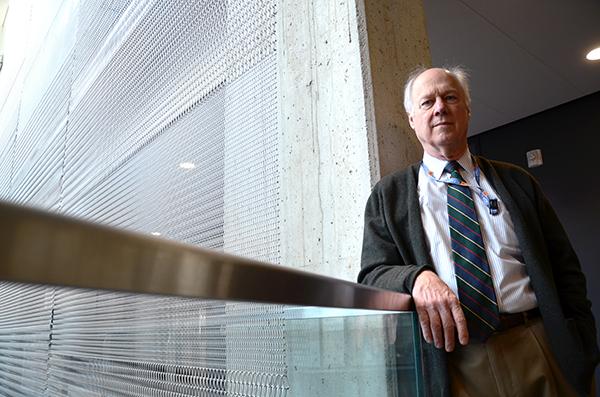The University’s new obesity research center is looking to evaluate how well a city-wide health plan, which a GW public health professor put in place nearly five years ago, has decreased child obesity and increased access to healthy food across the city.
Bill Dietz, the director of the Sumner M. Redstone Global Center for Prevention and Wellness, said the center will likely revisit the city’s overweight and obesity action plan to judge the success of its rollout.
“With the new administration, it may be time and appropriate to revisit that plan and look at whether it has been successfully implemented and what impact that implementation might have,” Dietz said.
The project would give Dietz a chance to position GW as the District’s authority on obesity and wellness research — which comes as he is planning to focus the center’s first projects on evaluating health in the D.C. area before expanding its scope.
The city plan aimed to improve healthy eating and exercise in D.C. Public Schools, child care facilities, city worksites and religious institutions.
Though the plan was approved under Adrian Fenty, who served as mayor from 2007 to 2011, most of its implementation came under Mayor Vincent Gray, a GW alumnus who left office last month.
GW students who have shown interest in getting involved with the center could be a part of assessing the plan. Dietz is also in the process of hiring an evaluator, who would help with the different projects the center is looking to launch as it gets off the ground this year.
Dietz was hired last year after Sumner Redstone gave $30 million to the Milken Institute School of Public Health to start an obesity and wellness research center at GW. That funding was used to hire Dietz, a former Centers for Disease Control and Prevention director, who said other funding would go toward hiring more faculty for the center and supporting other research projects.
Getting involved in a project to evaluate the city’s progress so far would look at the far-reaching plan and compare it to what researchers already know about childhood obesity, Dietz said.
“Healthier meals in schools alone is probably not going to do the trick unless it’s coupled with reduction of sugary drink intake, access to healthy food in the community, resources and the availability of physical activity,” he said. “Those are the kinds of things that the plan promoted, but the extent to which the plan was implemented is unclear.”
Pierre Vigilance, an associate professor of public health, drafted the plan as the city’s Department of Health director in 2009. Vigilance said a third-party could ask different questions about the plan than the ones city officials have raised, like how often students eat fruits and vegetables or how much access children have to physical activity at school.
The city had created a community task force to spread awareness of the plan, which could be helpful for researchers, he added.
“If a dependent external group were to look at it, it might help move forward some of the community agenda items,” he said. “An evaluation could help bring some of those partners back to the table, hold some of them accountable for some of the maneuvers: Food access, access to care, whatever it is.”
This evaluation would lay the groundwork for other research projects Dietz has said he hopes to launch at the center. He hopes to secure funding to evaluate the success of laws like the Healthy Schools Act, judging how different combinations of healthy eating and exercise affect school children.
Another project would look at the Healthy Tots Act, a similar D.C. bill aimed at reinforcing healthy habits at early childcare centers. Though the law recently lost funding, Dietz said there’s some talk on the D.C. Council about restoring it.
Ted Kyle, an obesity researcher who serves on the Strategies to Overcome and Prevent Obesity Alliance with Dietz, said evaluations of obesity prevention plans are necessary because the problems are so complex. While most people think obesity is a result of choosing to eat the wrong foods or too much food, food access and the knowledge needed to make better decisions about which foods to eat are more important factors, he said.
In D.C.’s Wards 7 and 8, about 115,000 people are served by seven grocery stores, according to data from the 2010 census. Lack of easy access to a grocery store forces them to eat fast food or choose unhealthy, cheap food more often, and even if a grocery store opens near them, they don’t know the best food to buy.
“People don’t have infinite choices. They choose from what’s set before them. It’s a whole matter of energy balance,” he said.







